银杏叶生物活性物质提取中的分析测试方法研究毕业论文
2020-08-13 20:44:30
摘 要
银杏是银杏科银杏属落叶乔木,在长枝上分枝生长呈径向分化,叶柄长且呈圆形,叶片的形状为扇形,叶片的两侧呈浅绿色,分枝散布于各个枝条上。 银杏叶具有甜、苦、涩等味道,对心、肺均具有好处,具有改善肺,哮喘,血液循环,疼痛等作用,可用于治疗冠心病、心绞痛和高脂血症等疾病,具有重要的药用值[1],所以得到广泛的关注。
有关银杏叶的研究始于20世纪60年代德国人的工作。在这期间,我国也生产过银杏叶制剂,但由于生产工艺粗糙且临床效果不佳而退出市场。近十余年来,对银杏研究的深入及药物、保健品等日常需求又引起了国内开发银杏叶的热潮。经过大量的研究,人们相继从银杏叶中分离出黄酮、萜内酯、银杏酸、多糖、单宁等多种活性物质。银杏叶中成分复杂,将其各种成分进行分离、纯化并测定对于银杏叶的深入研究及开发具有重要意义。
野生银杏的数量稀少,难以满足日常需求,于是发展了人工栽培银杏的技术,并进一步发展为产业,现在所见到的银杏大多为人工栽培。我国是银杏分布的中心,在第三次和第四次冰川运动中,分布在世界其他地区的银杏几乎全部灭绝,只有存在于我国的部分银杏得以保存下来,成为现存古代孑遗植物,并为我国所独有。全球的银杏资源有70%以上分布在我国,黑龙江,内蒙古,青海,西藏,海南等省、市、自治区均有大量种植【2】。许多适合银杏生长的地方将银杏种植发展成产业,反过来带动了银杏的相关研究。
关键词:银杏叶,活性物质,分析检测
Abstract
Ginkgo biloba is a deciduous tree of Ginkgo biloba, branched on the long branches of radial growth, petiole long and round, the shape of the blade fan-shaped, leaves on both sides of the light green, branches scattered on the various branches. Ginkgo biloba has a sweet, bitter, astringent and other taste, the heart and lung are good, with improved lung, asthma, blood circulation, pain and other effects, can be used to treat coronary heart disease, angina and hyperlipidemia and other diseases, Medicinal value [1], so get wide attention.
The study of Ginkgo biloba began in the 1960s German work. During this period, China also produced ginkgo leaf preparations, but because of the rough production process and poor clinical results out of the market. Over the past decade, the deep research on ginkgo and drugs, health care products and other daily demand has caused the domestic development of ginkgo leaf craze. After a lot of research, people have been isolated from the ginkgo leaves flavonoids, terpene lactone, ginkgolic acid, polysaccharides, tannins and other active substances. Ginkgo biloba in the composition of complex, its various components of the separation, purification and determination of Ginkgo biloba in-depth research and development of great significance.
The number of wild ginkgo is scarce, it is difficult to meet the daily needs, so the development of artificial cultivation of ginkgo technology, and further development for the industry, now see ginkgo mostly artificial cultivation. China is the center of ginkgo distribution, in the third and fourth glacier movement, distributed in the rest of the world almost all extinction of ginkgo, only exists in China part of the ginkgo can be preserved as an existing ancient relict plant, and for our country Unique. There are more than 70% of the global ginkgo resources in China, Heilongjiang, Inner Mongolia, Qinghai, Tibet, Hainan and other provinces, municipalities and autonomous regions are a large number of cultivation [2], the other east of Guangdong, southern Zhejiang, west west of Shaanxi, Southwest to Sichuan, Guizhou, Yunnan and other places there are many ginkgo resources. Many places for ginkgo growth ginkgo cultivation into the industry, which in turn led to the research of ginkgo.
Key words: Ginkgo biloba, active substance, analysis,detection
目录
第一章 绪论 1
1.1 银杏叶生物活性物质及其分析方法进展 1
1.1.1 黄酮类(Flavonoids) 1
1.1.2 萜内酯(Ginkgolide) 4
1.1.3 银杏酸(Ginkgolic acid) 7
1.1.4 多糖(Polysaccharide ) 9
1.1.5 单宁(Tannins) 10
1.2 本课题研究内容及意义 12
第二章 银杏叶活性物质的分析方法研究 13
2.1 银杏叶活性物质试样的提取 13
2.1.1 原料采集和处理 13
2.1.2 活性物质提取 13
2.1.3 初步除杂(除糖类和蛋白质) 13
2.1.4 活性物质分离 13
2.2 单宁检测方法的建立 14
2.2.1 试剂与仪器 14
2.2.2 建立酒石酸亚铁显色体系下的工作曲线 15
2.2.2 建立硝酸铝显色体系下的工作曲线 15
2.2.3 银杏提取物的测定 16
2.3 黄酮检测方法的改进 16
2.3.1 试剂、仪器与色谱条件 16
2.3.2 对照品溶液的制备 17
2.3.3 供试品溶液的制备 17
2.3.4 测定法 17
2.4 萜内酯的检测 19
2.4.1 试剂、仪器与色谱条件 19
2.4.2 标样及提取物溶液的制备 20
2.4.3 测定法 20
2.5 银杏酸的检测 22
2.5.1 试剂、仪器与色谱条件 22
2.5.2 标样的制备 23
2.5.3 供试品溶液的制备 23
2.5.4 测定法 23
2.6 多糖的检测 24
2.6.1 试剂与仪器 24
2.6.1 溶液的配制 25
2.6.2 测定方法和数据处理 25
第三章 结果分析 25
参考文献 26
致谢 30
第一章 绪论
银杏提取物是指以银杏叶为原料对银杏叶进行提取后再分离纯化得到的材料。银杏提取物的主要活性成分是黄酮和萜内酯[3],除此之外还有许多其他类型的活性物质。以德国Schwobe专利生产的EGb761作为标准,银杏制剂的成分大致包括24%的黄酮类化合物,6%萜内酯,小于0.0005%银杏酸,7%原花青素,13%羧酸,2%,20%的非类黄酮甘草,4%的大分子,5%的无机,3%的水和3%的其他物质[4]。只有达到或接近该标准,银杏提取物才可称为银杏制剂。迄今为止银杏叶制剂经历了从第一代到第四代的发展历程,由于第一代的银杏叶产品的活性成分含量少于16%,所以还不能称作是银杏叶制剂,仅作为保健品使用,不能药用,一般为银杏叶茶;第二代的银杏叶产品,其活性成分达到了16%以上,其中主要是银杏黄酮,已经可以称作银杏叶制剂;第三代的银杏叶产品的银杏黄酮含量达到了24%,已经具有了清除自由基的药理作用,大多数现在的银杏叶制剂水平都停留在此阶段;第四代银杏叶制剂有比较严格的含量及纯度要求,具体如下:①提取之后的浓缩比达到50:1的水平;②银杏黄酮的含量达到24%,萜内酯的含量达到6%(3.1%银杏内酯,2.9%银杏内酯);③银杏酸的含量少于5 ppm[5]。无论是银杏叶提取物还是银杏叶制剂都是将银杏叶中的活性物质按银杏叶中的比例提取出来并富集后得到,其中的活性物质含量与银杏叶中活性物质的含量相对应,因此对银杏叶中活性物质的研究可以从银杏叶提取物入手。到目前为止,已经发展出了较为完善的银杏叶活性物质检测方法。
1.1 银杏叶生物活性物质及其分析方法进展
1.1.1 黄酮类(Flavonoids)
银杏叶中含有较多的黄酮类化合物,银杏叶标准制剂中要求黄酮含量达到24%。黄酮类物质是银杏叶中的重要活性成分,在药理方面具有治疗心血管和脑血管疾病的重要作用。银杏叶中的黄酮类物质组成复杂,但最主要的成分是黄酮醇苷,黄酮醇苷的含量在银杏叶总量中通常可以达到5.9%【6】。在银杏叶的提取物中黄酮类物质大致有40余种之多,根据它们的化学结构方面的差异可以初步分为三类:32种单黄酮,6种双黄酮,4种儿茶素[7]。32种单黄酮主要是槲皮素,山奈酚和异鼠李素和多种糖基结合后形成的糖苷,结构上具有的特征主要是含有5,7,4-三羟基和与糖基连接的3-羟基,糖基多种多样可以是单糖、二糖,也可以是三糖,但是实际上大多数糖基都是葡萄糖,也有部分是鼠李糖[8]。
相关图片展示:
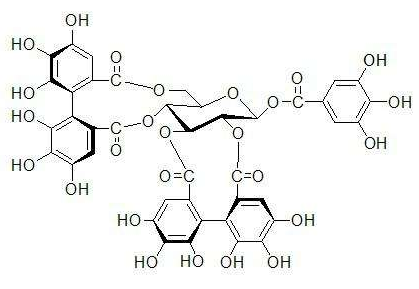
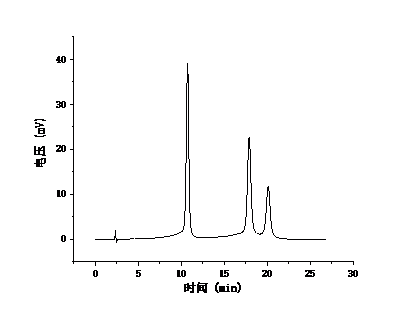
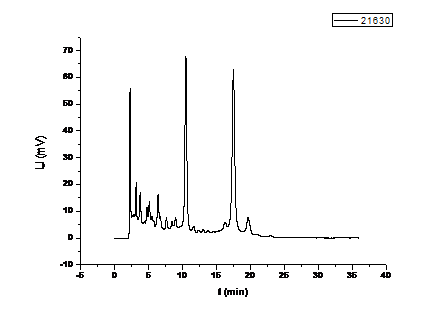
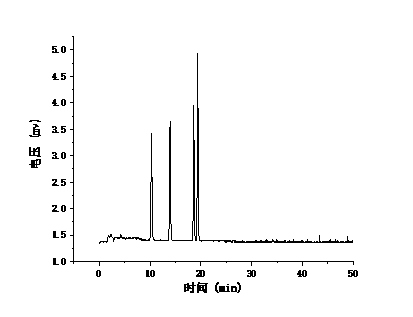
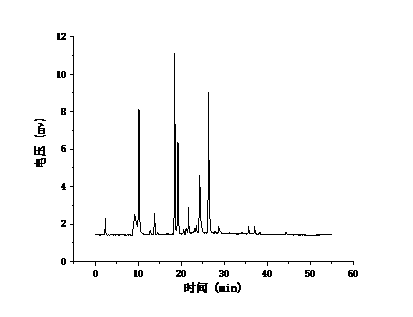
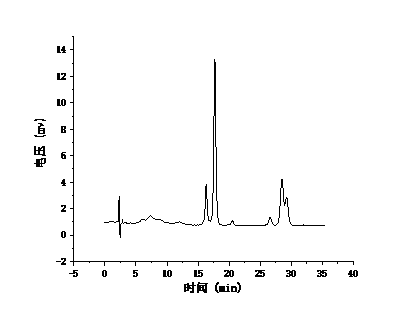
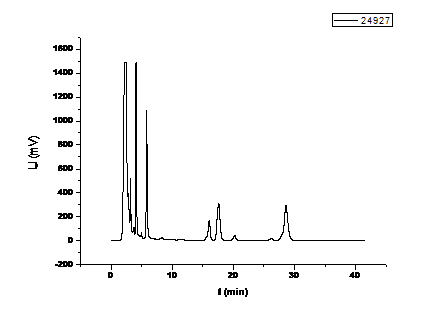
您可能感兴趣的文章
- BN嵌入型四苯并五苯:一种工具高稳定性的并五苯衍生物外文翻译资料
- MoS2和石墨烯作为助催化剂在增强的可见光光催化H2生产活性的多臂CdS纳米棒的作用外文翻译资料
- 通过在BiVO4的不同晶面上进行双助剂的合理组装制备高效率的光催化剂外文翻译资料
- 非编码RNA的固相合成研究外文翻译资料
- 氢化驱动的导电Na2Ti3O7纳米阵列作为钠离子电池阳极外文翻译资料
- 高能量及功率密度的可充电锌-二氧化锰电池外文翻译资料
- 利用导电聚合物纳米线阵列来增强电化学性能外文翻译资料
- 自支撑Na2Ti3O7纳米阵列/石墨烯泡沫和石墨烯泡沫准固态钠离子电容器电极外文翻译资料
- 基于碳纳米管金纳米粒子辣根过氧化物酶构建的过氧化氢生物传感器毕业论文
- 新型联二吡啶Pt(II)炔配合物的设计、合成及光物理性质研究毕业论文




